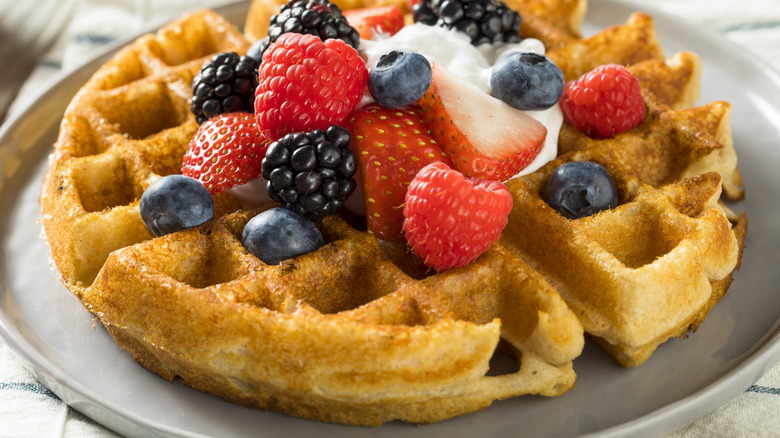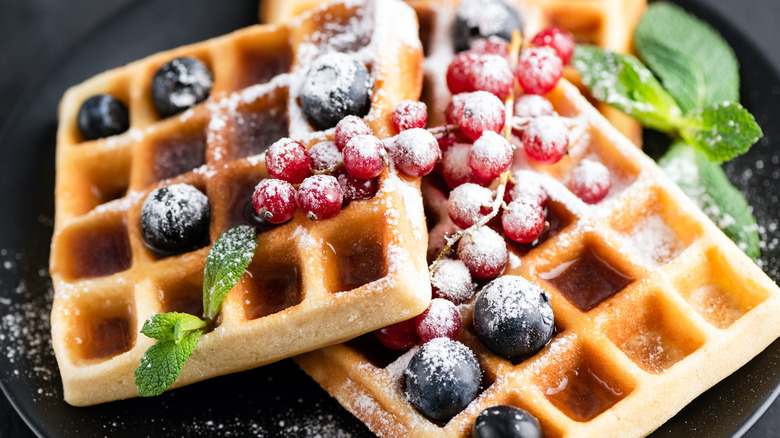How The 1964 World's Fair Helped Popularize The Belgian Waffle
There are waffles, and then there are Belgian waffles. The former have a history that dates back to the Middle Ages, while the latter were a more recent invention, and in fact only became widely popular in the U.S. following the 1964 World's Fair in New York City.
Like many so-called overnight successes, however, there was a gradual buildup in both exposure and interest. For instance, before their acclaimed 1964 appearance at the World's Fair in New York, the Belgian waffle was first spotlighted at two other World's Fair events. Its debut appearance came at the World's Fair in Brussels, Belgium in 1958, when local vendor Walter Cleyman managed to sell 400,000 of the decadent fresh-fruit-laden waffles to a receptive regional audience largely familiar with the product. The next World's Fair wasn't held on home turf; nonetheles, Cleyman and his family followed up on the initial success by selling a whopping 500,000 of the delicious breakfast treats — then known as "Brussels waffles" — at the 1962 global expo in Seattle Washington.
Despite the robust sales, it would take one more World's Fair appearance before the product finally captured the hearts, minds, and stomachs of American consumers.
The Belgian waffle's remarkable rise
They weren't called Brussels waffles by the time they made their debut at the Belgium pavilion at the 1964 World's Fair, held in Flushing Meadows' Corona Park. Instead they were known as Bel-Gems, since the couple selling them for 99 cents each, Maurice and Rose Vermersch, noticed that many Americans were less than knowledgeable about the location of their Belgian hometown. The waffles were again a massive hit, so much so that the expos for other countries began selling them, too. "It was a tidal wave," Bill Cotter, co-author of "The 1964-1965 New York World's Fair: Creation and Legacy" recalled in Gourmet Magazine. "And everybody had to have a waffle stand by 1965."
The Vermersch's daughter, MariePaule, who was also there at the 1964 World's Fair (which carried over into 1965), remembers that they were selling about 2,500 waffles each day. MariePaule has since shared some of the reasons for the waffles' incredible success. These included the whipped cream and strawberries — Rose Vermersch's inspiration originally — as well as vanilla extract that was added as a flavoring ingredient. Another factor was the intense heat (500 degrees) of the cast-iron waffle maker, which contributed to the Belgian waffles' wonderful aroma.
Whatever the reasons, one thing was certain. By the time the 1964-1965 World's Fair was over, Belgian waffles were internationally famous.

